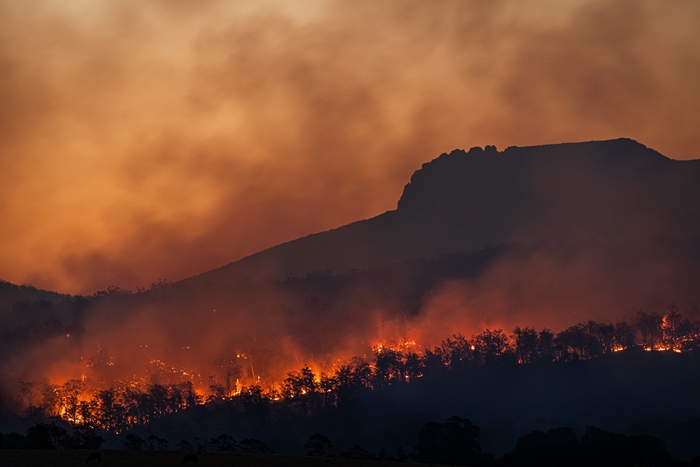Planetary Boundaries are a framework to describe the 9 thresholds in the Earth system that must be respected for sustainable human development. As of 2022, six of the nine boundaries have been crossed.
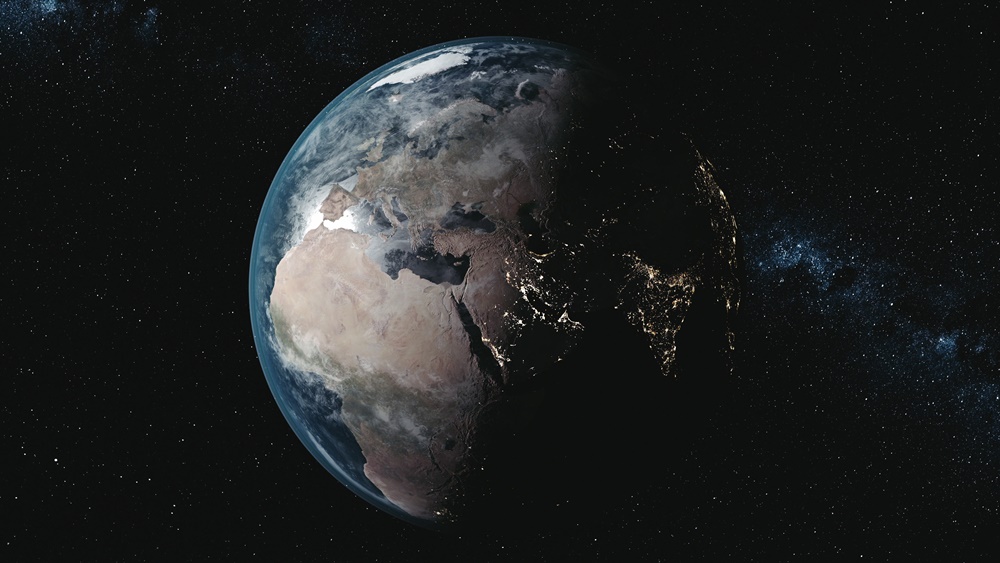
―
What are Planetary Boundaries?
―
A. Planetary boundaries are a framework to describe the 9 thresholds in the Earth system that must be respected for sustainable human development.
Johan Rockström, director of the Stockholm Resilience Center (SRC), and his team introduced the term planetary boundaries in Nature in 2009, identifying 9 limits and 3 criteria that are essential for human survival serving as a benchmark to ensure a habitable Earth.
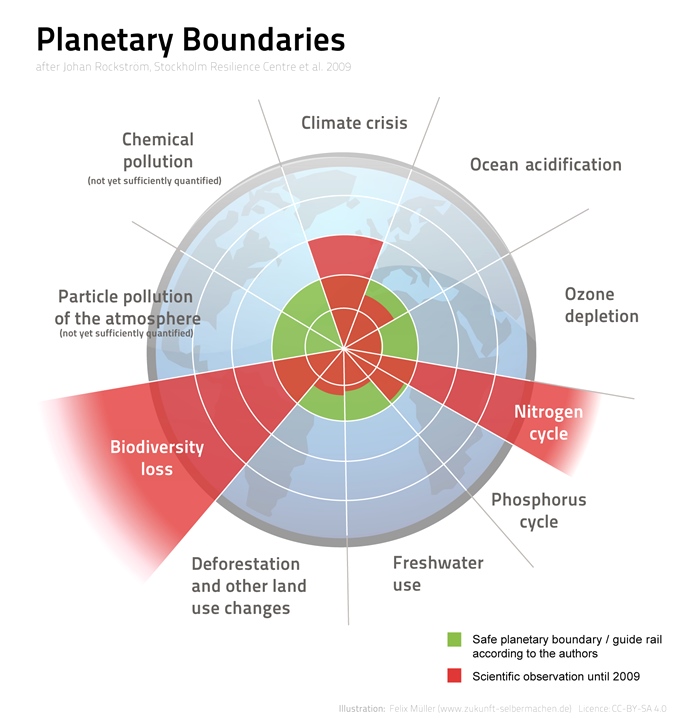
(Source : Rockström et al. published in Nature in 2009)
* Here is a list of the nine planetary boundaries
① Climate change
② Ozone depletion in the stratosphere
③ Increase of aerosols in the atmosphere
④ Ocean Acidification
⑤ Biochemical flows of nitrogen (N) and phosphorus (P)
⑥ Freshwater use
⑦ Land use change
⑧ Biodiversity loss
⑨ Introduction of new entities by humans
* Three levels of safety for humanity
∙ Safe operating space: The Earth is able to maintain its stable state.
∙ Increasing danger zone: The level of impact on Earth exceeds the safe operating space but within the range where Earth can recover on its own through resilience mechanisms.
∙ High risk zone: The level of impact exceeds the Earth’s resilience mechanisms and cannot recover from the smallest impact.
As depicted in the above diagram, two of the nine boundaries have been crossed in 2009 when the concept was introduced: biodiversity loss and disruption of the nitrogen.
―
What is the current state of the planetary boundaries?
―
A. According to Nature April 2022, the following 6 boundaries have reached the danger zone. ▲climate change ▲Biodiversity ▲Land use ▲Ocean acidification ▲Biochemical flows of nitrogen and phosphorus ▲Introduction of new entities
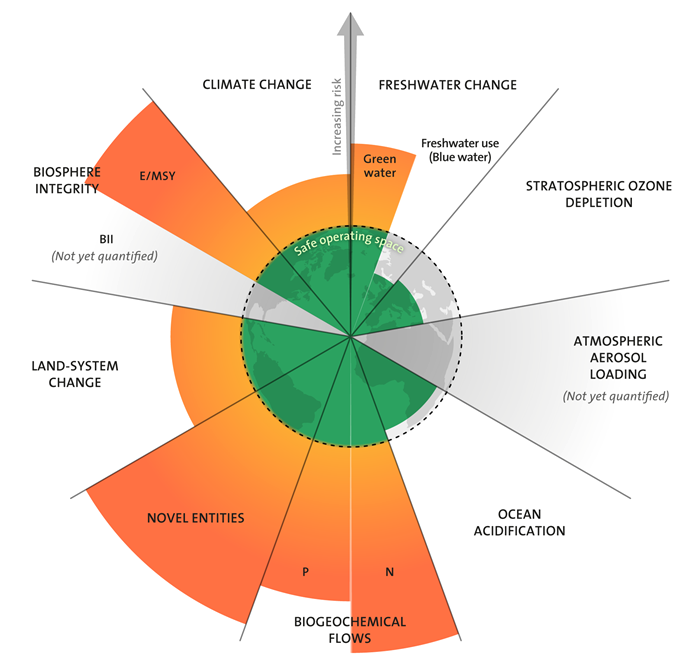
Source: Rockström et al. published in Nature in 2022
Status of Planetary Boundaries 2022
―
Planetary Boundaries 1
Climate Change
― Recent evidence show that the levels of CO2 in the Earth’s atmosphere has passed the safety level (under 350ppm) and is not over 400ppm. It means that we have crossed the planetary boundary and entered the increasing danger zone (350~450ppm) and may transgress to the high risk zone when the level becomes higher than 450ppm. ― ― The ozone layer in the stratosphere is critical in protecting life on earth by filtering out harmful ultraviolet (UV) radiation from the sun. However, the first ozone hole was first observed over Antarctica in 1980, which was a result of dramatic increase of chemicals in the atmosphere. The thinning of the ozone layer has allowed higher levels of ultraviolet radiation to reach the Earth’s surface, which had harmful effects on both human and ecological systems. Increased exposure to UV radiation has led to a rise in skin cancer incidence and damaged terrestrial and marine biological systems. Fortunately, the international community’s actions following the 1987 Montreal Protocol have helped to maintain the ozone layer within the boundary. ― ― Aerosols are small solid or liquid particles that are suspended in the atmosphere, typically ranging from 0.001~100 μm. They are often associated with meteorological phenomena such as haze, dust, and fog. When aerosols combine with reactive gases in the atmosphere, it can cause acid rain, smog, and reduced visibility. Breathing in air contaminated with harmful aerosols can have significant health impacts. It is estimated that 800,000 people die every year as a result of exposure to these pollutants. Additionally, aerosols can have environmental impacts such as contributing to climate change and affecting ecosystems. ― ― Since the beginning of the Industrial Revolution, surface ocean acidity has been increased by 30%. This change in ocean chemistry can have significant impacts on marine ecosystems, including a decline in fish stocks and causing a dramatic decline in fish stocks. In fact, approximately a quarter of the carbon dioxide in the atmosphere is absorbed by the ocean. As CO2 dissolves in seawater, it reacts to form carbonic acid, leading to a decrease in the ocean’s pH and increase in acidity. The reduced availability of carbonate ions caused by increased acidity can impede the growth and survival of organisms such as corals, shellfish, and plankton, ultimately affecting the entire food chain in the marine ecosystem. ― ― The current biochemical flow of nitrogen has crossed the threshold and is at high risk. Modern agricultural methods have evolved over time meet the growing demand for food from an increasing global population. The use of chemical fertilizers, which are made with nitrogen and phosphorus, have greatly increased crop yields and ensuring food security. However, the excessive use of these fertilizers has led to negative environmental impacts, including soil and water pollution. When nitrogen and phosphorus fertilizers are applied to fields, they can leach into groundwater and surface water, eventually making their way into lakes and oceans. This can lead to an overgrowth of algae and other plants, leading to phenomena such as red tide or blue-green algae that turn the water red or green. ― ― The World Meteorological Organization (WMO) has warned that 5 billion people will lack access to freshwater by 2050. Freshwater resources are under increasing pressure from a variety of human activities, including industrial use and modification of water bodies. These impacts can have devastating consequences for the environment, including changes in river flows and disruptions to the natural movement of streams and rivers around the world. ― ― Human activities, such as deforestation for agriculture, have led to the destruction of nearly 40% of the world’s forests, with the remaining 62% now in a zone of increased risk. According the the World Wide Fund for Nature (WWF), approximately 110,000 to 150,000 square kilometers of forest are destroyed every year, which is equivalent to 36 soccer fields being destroyed every minute. Change in land systems affect CO2 concentrations, water flow, solar heat absorption, biodiversity, and ecosystems, leading to climate change. In addition to their role in regulating the global climate, forests also provide critical habitats for a range of plants and animal species, many of which are already under threat due to habitat loss and fragmentation. ― ― The Earth’s biodiversity is under threat. We have already crossed the safe boundaries for biodiversity loss and have entered the high-risk zone. Recent evidence shows that 100~1,000 species out of 1 million are becoming extinct in each year. According to the planetary boundary framework, the safe operating space for biodiversity loss is when the number of species becoming extinct in one year is less than 10 species. ― ― New entities created by humans are having a significant impact on the health of our planet. Emissions of toxic and long-lived materials such as heavy metal compounds and radioactive substances are adversely affecting the global environment, with severe and irreversible consequences for living organisms and the physical environment. These compounds, which we have introduced to the planet ourselves, have long-term and devastating effects on both current and future generations. They can reduce fertility and increase the likelihood of permanent genetic damage, threatening the sustainability of many species and ecosystems. ― ― "If we don’t stop global warming between 2020 and 2030, the planet that has kept humanity warm will turn into an enemy and fiercely attack us." - Johan Rockström, Breaking Boundaries: The Science of Our Planet Droughts and desertification, Wildfires and floods, Rising sea levels and ocean acidification. It seems like the attack has already begun. But there is still hope for us. The concept of planetary boundaries suggests that if humans can stay within these boundaries, we may be able to avoid catastrophic consequences. According to Professor Rockström, we need to undergo transition in the following 6 systems in order to maintain the health of the planet’s ecosystems and achieve stability and prosperity: △Energy △Food and land △Inequality △Urbanization △Population and health △Technology While it may seem daunting, the possibility of achieving these transitions lie in our hands. The actions we take between 2020 and 2030 will determine the future of our planet. “Endless greed for material possessions has brought about serious air and water pollution that is destroying nature, including the ozone layer that protects us. If present trends continue, humanity will find itself destroyed by the traps of material civilization.” -Dr. Sun Myung Moon, As a Peace-Loving Global Citizen-
Learn more about related issues Written by Sharon Choi Director of Planning Sunhak Peace Prize SecretariatPlanetary Boundaries 2
Ozone Depletion in the StratospherePlanetary Boundaries 3
Increase of Aerosols in the AtmospherePlanetary Boundaries 4
Ocean AcidificationPlanetary Boundaries 5
Biochemical Flow of Nitrogen and Phosphorus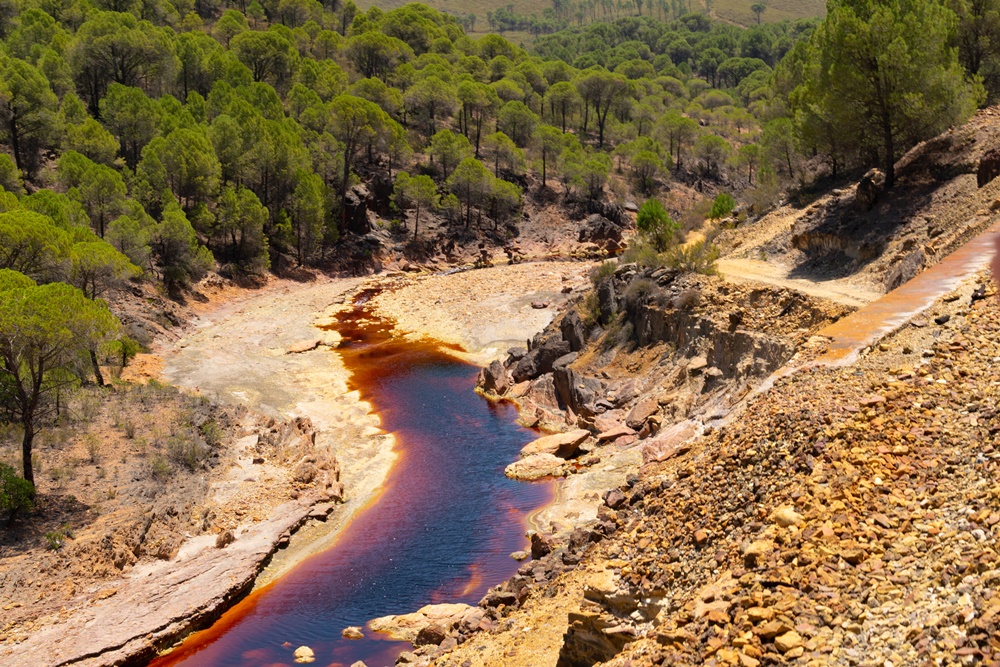
Planetary Boundaries 6
Freshwater UsePlanetary Boundaries 7
Land Use Changee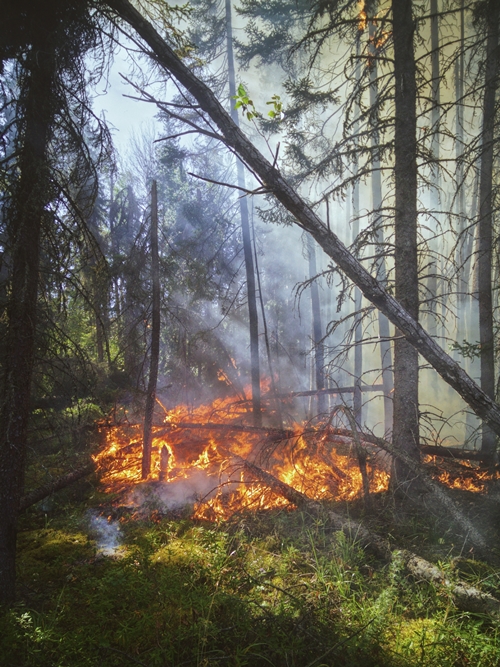
Planetary Boundaries 8
Biodiversity LossPlanetary Boundaries 9
Introduction of New Entities by HumansHow Can We Protect the Planetary Boundaries?
